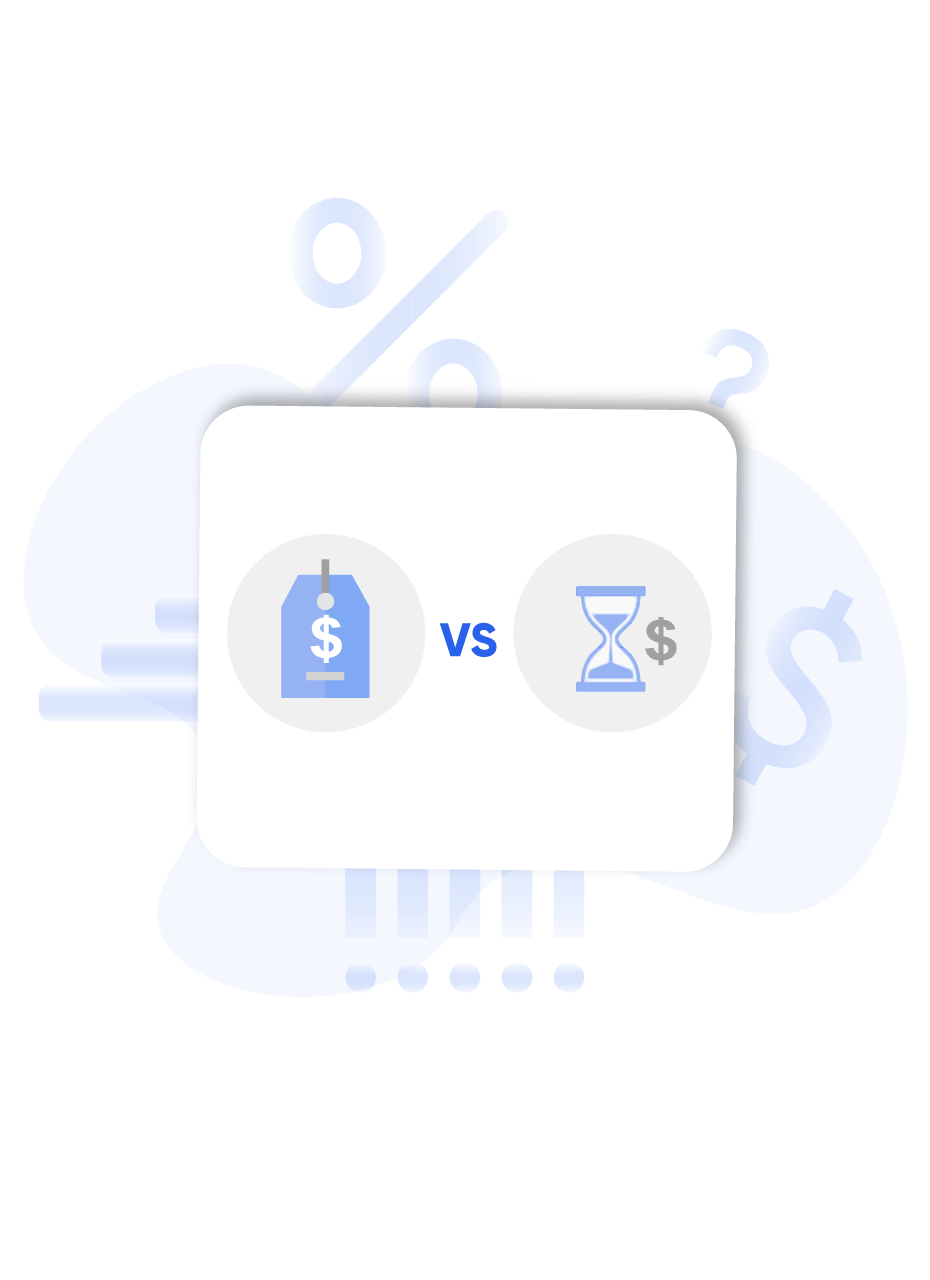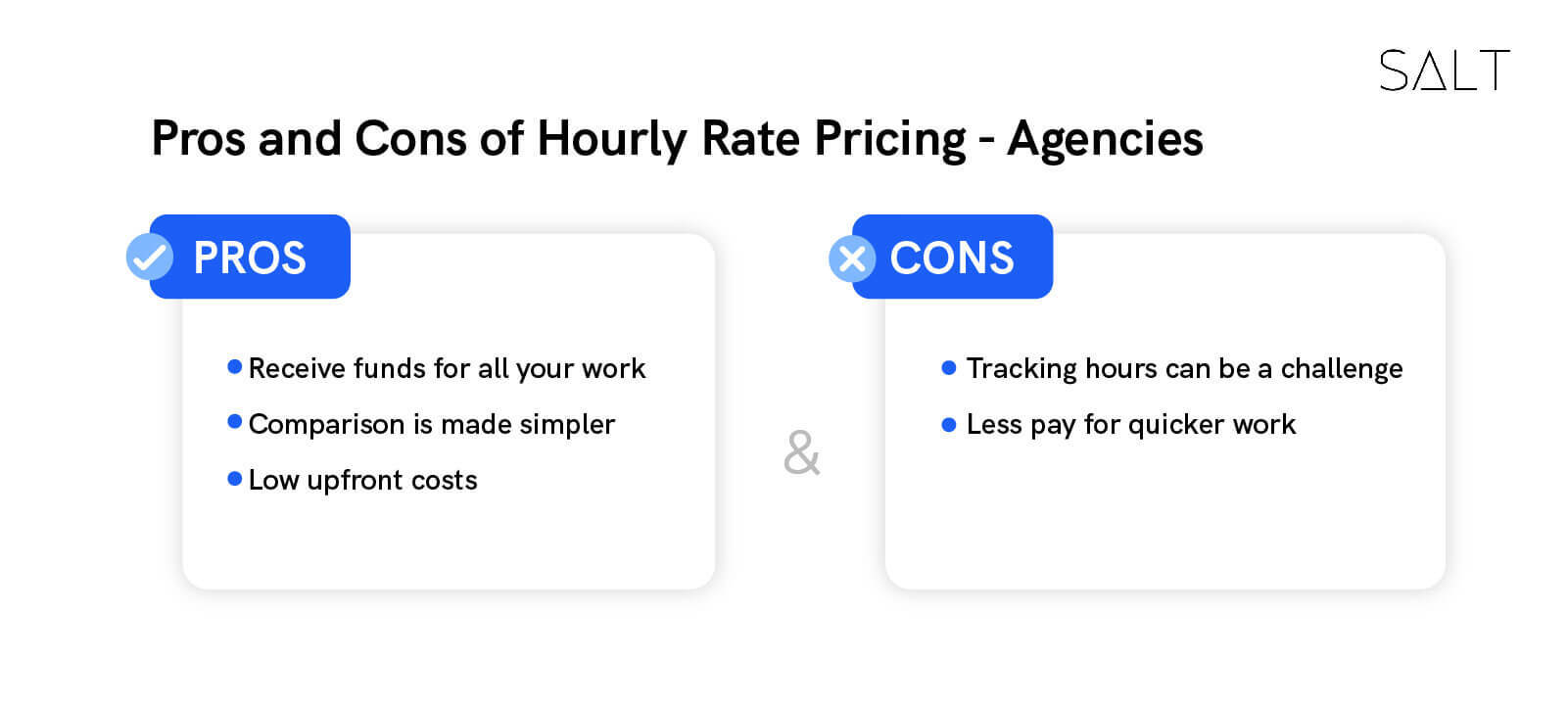Billing for your client is a routine activity, whether you're a freelancer, work for an agency, or own a small business. Every company operates uniquely, and the billing process is no different. Therefore, there are two options: hourly rate pay or flat payment. When billing customers and collecting payment for work, tactics are important.

It can be challenging to decide whether hourly billing or flat-rate billing is better for your purposes. Understanding the distinctions between each pricing system's specific benefits and drawbacks will enable you to choose the one that is best for you.
But depending on how you accomplish your task, this procedure requires a variety of strategies. Some entrepreneurs and small business owners bill their customers hourly, while others just charge a fixed fee. The billing procedure is determined by convenience or job requirements.
Everything you need to know about flat rate pay and hourly rate compensation is covered in this blog. Read down to see a comparison of flat-rate compensation vs. hourly rate pay!
What is meant by a flat rate?
A flat fee is a set cost for the entire project. This pricing was determined before working with your client. When you offer flat-rate pay, you bill your customer a predetermined amount regardless of the volume of work they perform. This is a flat rate that is unaffected by the number of labor hours you contribute to the project.
It's crucial for agencies, or if you work as a freelance writer, small businesses, to precisely estimate how much time and effort will be required for a project before providing a flat fee quote.
If your prediction is wrong and some project components take longer than anticipated, you won't get paid for the extra hours. You will be paid the same amount whether you work two hours or ten, no matter how many.
For example, an advertising agency may charge a flat fee of $3,000 for the creation of a single advertisement campaign.
What is meant by the hourly rate?
When you bill by the hour for work on a project, you establish a base hourly fee. You can charge for the materials required to finish the project in addition to the time you spend on it.
A service provider may charge an hourly rate for the work they do. It is typically employed when it is unclear how long a job might take. Since the agency pays the service provider on an hourly basis, there is a lot of room for changes or additions, should the agency so desire.
For example, instead of a flat fee of $3,000, an advertising agency might charge $100 per hour for an advertising campaign.
Since you won't know the project's final cost until the end, hourly invoicing makes it more difficult for customers to forecast the cost of a project.
Pros and Cons of Flat Rate Pricing - Agencies

The Pros of Flat Rate Pricing
Simplifies time tracking: To accurately bill the client while using hourly billing, you must keep thorough records of your time. However, with flat rate invoicing, it doesn't matter how many hours you put in; therefore, you don't need to keep track of your time for the client.
Advantages of efficiency: flat rate pricing is an excellent way to position yourself for increased revenue and growth. sometimes without even exerting more effort. You are rewarded for your efficiency on a flat-rate job. The more quickly you can finish a project, the more money you can make. Therefore, your pay increases as you gain experience.
Consider building a typical 7-page website for an agency. It costs $3,000 and requires 40 hours to complete. But as you get better at what you do and become more productive, it only takes you 30 hours.
Your typical hourly billable fee in the first case is about $75. In the second case, your hourly billing average is $100.
In both cases, your fee is $3000. However, you're now making more money per website than you were before because of your efficiency.
Tracking budgets becomes easy: businesses and agency owners can more easily arrange their budgets thanks to flat prices. A more systematic approach to managing overhead and inventories is beneficial. These pay systems give you predictability because you can foresee the volume of work completed, be it warranty repairs or other kinds of services.
The Cons of Flat Rate Pricing
The majority of the risk is borne by users. If you can control the risk, fixed-rate projects are acceptable. But if you don't have your documentation in order, there's a good chance the project could fail.
Take the example of estimating a project will take 10 hours and charging a flat cost based on that estimate, but the project takes twenty hours. The extra ten hours you worked won't be reimbursed in any other way.
More calculation is needed: You must carefully plan out how you'll spend your time in advance, estimate the cost of any necessary materials, and foresee any potential challenges or problems to come up with a fair proposal for flat-rate services. This might be a challenging assignment, especially for a new freelancer.
Decline in quality - It's challenging to resist rushing when you might earn more by doing more tasks. When you aren't paid by the hour, it's typical to see people rushing through projects and taking shortcuts. To maintain the operations of their businesses, agencies may accept jobs at reduced rates. Because of the constrained project profit margins, there may be some cutting of corners.
Pros and Cons of Hourly Rate Pricing - Agencies

The Pros of Hourly Rate Pricing
Receive funds for all your work: With hourly billing, your pay is based on the number of billable hours you put in. Thus, as opposed to fixed-rate billing, you don't incur the same danger of being underpaid.
Comparison is made simpler: hourly rates are the most straightforward way to compare competing firms when customers are looking for a certain service. Given that fixed pricing does not always accurately reflect the cost of goods, this technique may make it easier for customers to understand your billing process.
Low upfront costs: hourly billing may be more appealing to potential customers since, unlike fixed-rate billing, they are not required to pay a significant amount in advance. It allows agencies time to evaluate the customer's work and adjust compensation rates as necessary.
The Cons of Flat Rate Pricing
Tracking hours can be a challenge. It can be difficult to keep track of hours because there is no reliable way to do so when you charge by the hour. This calls for effective time management techniques and a reliable mechanism for tracking billable hours.
Less pay for quicker work: If you use hourly billing, you could not get paid as much for working quickly and efficiently because working fewer hours results in less pay. Hourly charging is at the mercy of efficiency.
For illustration, suppose a junior designer at your company spends five hours making mockups for a one-page website. But it requires two hours from your senior designer.
Should your payment be reduced?
You could temporarily fix the issue by raising your hourly fee. But this isn't always how it works.
Even if you have the experience to support the price, the higher your hourly rate, the more difficult it may be for a client to accept the concept of using your firm.
Which rate is better, the flat rate or the hourly rate?
If a job takes longer than expected, flat rate pricing may result in you receiving less money overall than hourly rate billing. However, hourly charging necessitates an accurate system to monitor your project time management. If you bill by the hour, you can be paid less for services completed more quickly. Each pricing strategy has advantages and disadvantages.
The "key" is to understand the value of your work and the risk you're taking. In this situation, the easiest method to define risk is to ask oneself,
How precisely can I predict how long it will take to do this task for the client?
For instance, after getting the customer to agree to all the project criteria, you may discover that they are still unclear about the work's scope.
This can be the case if the project is extremely intricate or involves numerous moving elements. Asking yourself these questions will help you determine the value of your effort.
The Best Option: Hybrid Rate
A hybrid rate is essentially a combination of hourly and fixed rates that have been tailored to your company's needs and circumstances. For instance, if you're installing a new boiler, you might charge a fixed rate because you've done it a hundred times before and know how long it should take.
There's no reason you should have to pick between flat rate and hourly charging if you're an agency, freelancer, or business owner. How about combining the two? Review each of the services you provide one by one to develop a hybrid billing system. Think about which ones are better suited for flat-rate pricing and which ones are better suited for hourly billing.
The process of pitching yourself for client projects will be simpler and more standard if you create a pricing book for flat-rate services and decide on an hourly cost. Even better, you can create templates to greatly improve the efficiency of creating quotations and invoices.


